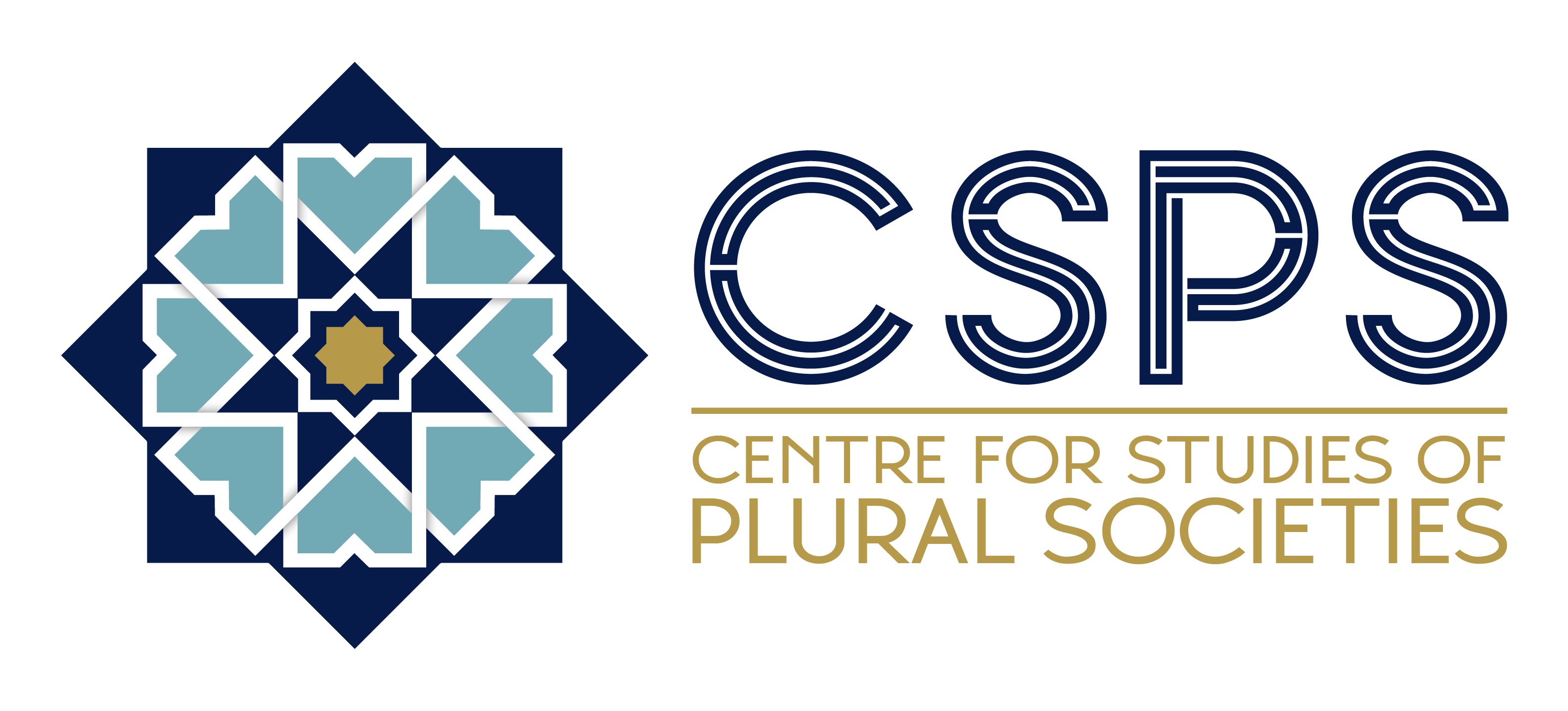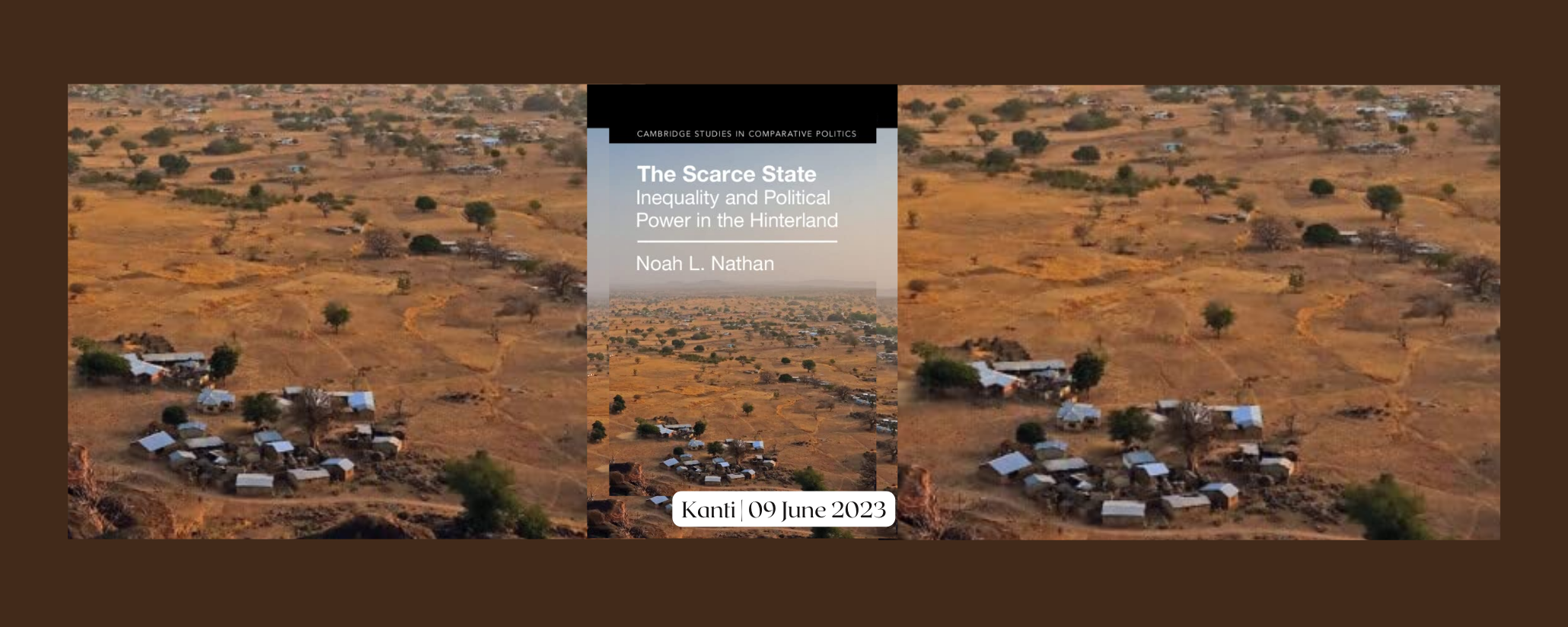The Scarce State: Inequality and Political Power in the Hinterland by Noah L. Nathan, Cambridge, Cambridge University Press, 2023, 310 pp., $120 (Hardback), ISBN: 978-1-009-26110-4
Noah L. Nathan’s recent book titled The Scarce State: Inequality and Political Power in the Hinterland (2023) could be seen as a significant study on state power and, simultaneously, a radical departure from the mainstream academic scholarship on state-society relations. The book can be placed among the literature on the long-running academic debate on the relevance of the state as an analytical category in social science research (Mitchell, 1991) as it demonstrates that the wider implications of the state actions on socio-political realities cannot be easily dismissed just because the state has a minimal presence and limited bureaucratic capacity in a particular region.
The book’s core purpose is to challenge the mainstream assumption about state power and its significance in shaping politics and society. The prevalent academic tendency has been to establish a positive correlation between state power and its regional presence. However, the contradictory evidence that Nathan encountered throughout his academic life prompted him to undertake a deeper examination and argue with substantial evidence that there is indeed an inverse or negative correlation between the state power and its presence in the region, which he terms as ‘the state paradox.’
Noah L. Nathan is a faculty at the Massachusetts Institute of Technology (MIT) and has a decade-long fieldwork experience in Northern Ghana’s hinterlands. The book’s core purpose is to challenge the mainstream assumption about state power and its significance in shaping politics and society. The prevalent academic tendency has been to establish a positive correlation between state power and its regional presence. However, the contradictory evidence that Nathan encountered throughout his academic life prompted him to undertake a deeper examination and argue with substantial evidence that there is indeed an inverse or negative correlation between the state power and its presence in the region, which he terms as ‘the state paradox.’ In other words, the paradox, in short, suggests that despite having a minimal presence in a particular region, the state possesses a greater agency in shaping the political and social life of the people. The book opens a new frontier in the debate on the nature of the modern state in postcolonial societies by moving beyond the tradition/modernity dichotomy and focusing majorly on the long-term consequences of individual state actions.
Theoretical Backgrounds
The book’s first part introduces the major themes and theoretical underpinnings of the study undertaken. The study is conducted in the Northern Ghana hinterland, where the state is absent despite holding resources advantageous relative to society. Nathan explains this situation through one of his four theoretical models termed as " Absent, Advantaged Cell" classified based on two key variables: (a) the state’s presence and (b) the resource advantages that the state holds in contrast to society. Nathan defines this Cell as a peripheral zone where the state remains absent due to geographical difficulty or simply by choice because the region lacks political or economic incentives.
The concept of state scarcity or “the scarce state” is introduced, which the current academic scholarship equates with “state weakness”. Nathan presents an alternative perspective of studying the scarcity of the modern state. Although he agrees with other scholars on the state’s limited presence in some hinterlands, but the notion of scarcity is explained as a situation where the “demand for the state’s resources in society significantly outpaces supply.”
The concept of state scarcity or “the scarce state” is introduced, which the current academic scholarship equates with “state weakness”. Nathan presents an alternative perspective of studying the scarcity of the modern state. Although he agrees with other scholars on the state’s limited presence in some hinterlands, the notion of scarcity is explained as a situation where the “demand for the state’s resources in society significantly outpaces supply.” (p. 12) The demand for government jobs as a primary means of achieving economic mobility is exemplified by Nathan for Northern Ghana, which also explains the contemporary trend in India. The craze for government jobs among the youth, especially from the rural region, is common knowledge in India. (Sharma, 2022) Theoretically, this idea also corresponds to the notion of the “enchantment of the state” developed by Sudipta Kaviraj where the state occupies a central position for the disadvantaged groups to articulate their grievances. (Kaviraj, 2010) The popular perception of the state as an empowering agent in postcolonial democracies explains its centrality in reshaping social and political realities with greater agency.
Social and Political Outcomes of Isolated State Actions
The second and third part of the book deals with a deeper examination of the social and political outcomes of the isolated state actions in the hinterlands. The colonial state’s; limited presence and capacity led to unequal resource distribution, benefiting only a few families who gained an economic headstart. This created an entrenched inequality, with winners using their position to gain more benefits. Nathan also highlights the Diminishing Marginal Value where “the same initial benefit is no longer enough to close the gap; catching up later requires a bigger added payoff than earlier.” (p. 42) Therefore the inequality persists and spills over to other domains as well.
To change the status quo, losers of initial state intervention aim to gain the state’s attention. As the second president of the local youth organisation called Konkomba Youth Association (KOYA) described their mission, “If Konkombas wanted to eat, they would have to gain a seat at the state’s table.” (p. 145) These bottom-up community actions also resulted in large-scale violence that was surprisingly not directed against the state or its policies but at each other. However, he emphasises that the root causes of such conflicts are grievances created by state actions in the first place. Intermittently, political officials refrain from intervening primarily to make electoral gains. Similar arguments were advanced by scholars such as Paul Brass that communal violence serves the functional utility for electoral gains (Brass, 2003), and Steven Wilkinson has also underscored that the government undertakes electoral calculations before deciding to intervene in the conflict (Wilkinson, 2006)
The sociological composition of political elites being the creation of the state underscores its ability to influence the power dynamics in the society despite having a minimal presence. It also affirms the structural Marxist argument of the state having relative autonomy to society.
The long-term persistence of such entrenched inequality results in elitism, whose political manifestation would be dynastic politics and clientelism. The archival data (p. 176) revealing the lists of Chiefs and the candidates participating in elections, provided by the author, highlights that many individuals nominated or elected to parliament can trace their ancestry back to early colonial chiefs. The sociological composition of political elites being the creation of the state underscores its ability to influence the power dynamics in the society despite having a minimal presence. It also affirms the structural Marxist argument of the state’s relative autonomy to society.
Extending the Argument
Nathan validates his theory with case studies from regions corresponding to his other theoretical models, namely Southern Ghana (High, non-advantaged), Peru (High, advantaged), and Philippines (Absent, non-advantaged) to demonstrate the broader applicability of his theory by making a comparison to his focus area, i.e. Northern Ghana (Absent, advantaged). The final chapter presents a major theoretical outcome – the state paradox. The paradox challenges the conventional correlation between the appearance of a strong/weak state and its ability to influence visible changes. Nathan’s study reveals a paradox in such perspectives where a relatively absent state in a hinterland region may be able to reshape societal and political structures with a greater degree of agency. He argues that “labelling any state “weak” (or “strong”) becomes practically meaningless as an analytic device.” (p. 309)
Limitations
Although the book provides sufficient empirical evidence to support its arguments, it fails largely in the theoretical domain. Theoretically, concepts like state, power and society are highly contested (Mitchell, 1991). Although the author acknowledged that he was deliberately opting for a narrower definition of the state for “conceptual clarity” (p. 8), he was unable to remedy the theoretical inadequacies that would come with such an attempt. The excessive institutional and political reading of the events and social system contains the possibility of exclusion of wider social and cultural aspects that have confounding implications for the study.
The inadequacy germinates due to its excessive positivist approach and the deterministic idea of tracing the root cause of each and every social phenomenon back to the state and its institutions. It somewhat corresponds to the approach of old institutionalism, where the political institutions were given a prominent position in shaping every social and political phenomenon in the society, not the other way around. The book devotes much elaboration on how the state influences social and political realities. Still, examining societal forces’; ability to reshape the state’s nature is inferior to none.
The inadequacy germinates due to its excessive positivist approach and the deterministic idea of tracing the root cause of each and every social phenomenon back to the state and its institutions. It somewhat corresponds to the approach of old institutionalism, where the political institutions were given a prominent position in shaping every social and political phenomenon in the society, not the other way around. The book devotes much elaboration on how the state influences social and political realities. Still, examining societal forces’; ability to reshape the state’s nature is inferior to none.
Conclusion
Despite all the limitations, the book is a good addition to the academic scholarship on state and rural politics. The purpose of the study seems largely fulfilled, with the central argument being unambiguously communicated to the reader with meticulous empirical evidence. This book thus offers an important contribution to political science and sociology, as it encourages scholars to consider the impact of state action, even in areas where the state appears weak or practically absent.
Bibliography
- Brass, Paul R. The Production of Hindu-Muslim Violence in Contemporary India. University of Washington Press, 2003.
- Kaviraj, Sudipta. The Trajectories of the Indian State. Permanent Black, 2010.
- Mitchell, Timothy J. “The Limits of the State: Beyond Statist Approaches and Their Critics.” American Political Science Review, vol. 85, no. 1, Cambridge UP, Mar. 1991, pp. 77–96. https://doi.org/10.1017/s0003055400271451.
- Sharma, Kritika. “Unemployed for Years, Craving Govt Job: Why Story of Bihar’s Youth Is of Struggle and Despair.” The Print, Feb. 2022, www.theprint.in/india/unemployed-for-years-craving-govt-job-why-story-of-bihars-youth-is-of-struggle-despair/826066.
- Wilkinson, Steven. Votes and
- Violence: Electoral Competition and Ethnic Riots in India. Cambridge UP, 2006.
Kanti is a Research Intern at CSPS




